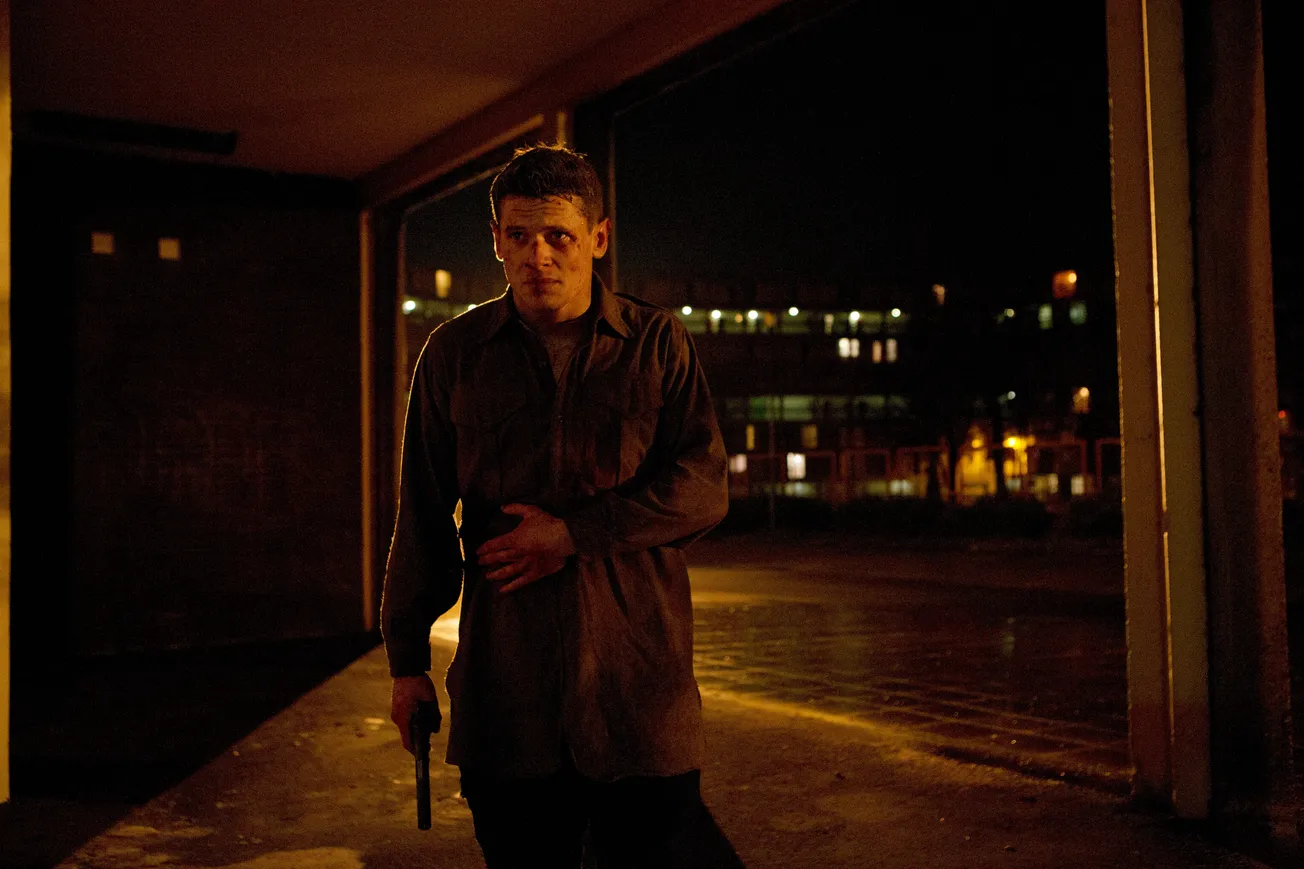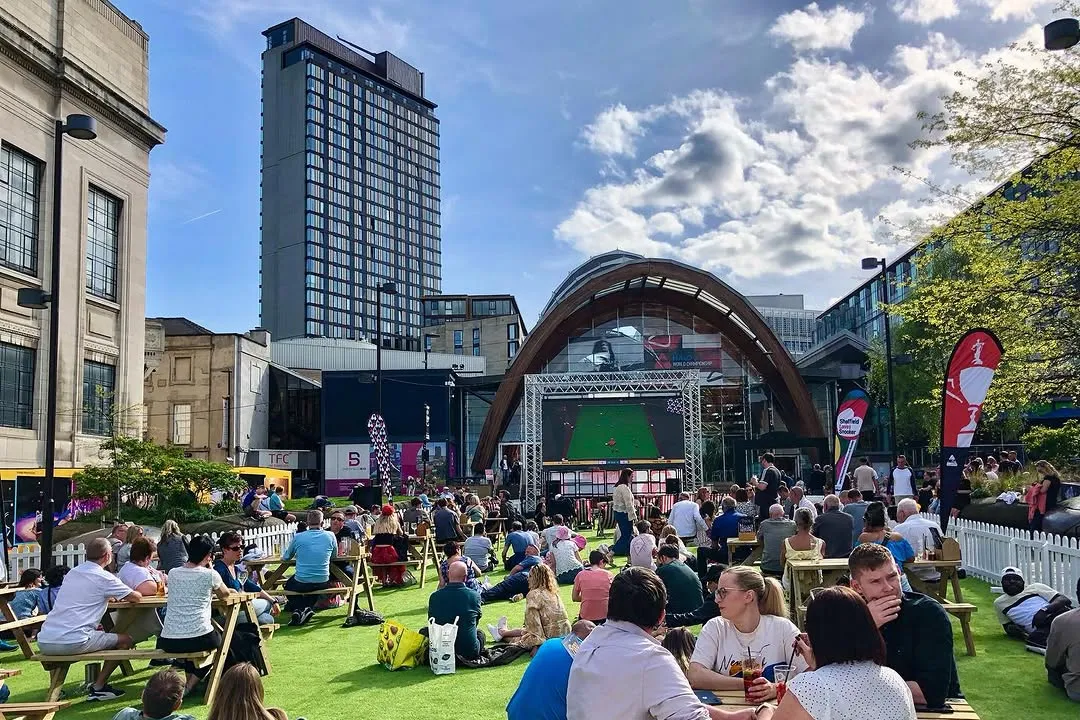When I first moved to Sheffield in 2014 I used to catch the bus on Waingate. Waiting for the number 75 to Pitsmoor, surrounded by fellow passengers laden with shopping bags, I would lean against the Old Town Hall, giving little thought to the crumbling neoclassical edifice behind me. The windows were dark and the gates locked, and while the city went about its business, one of its grandest buildings stood silent, slowly deteriorating.
Over the past seven years it has not fared any better. Its grimy and soot-stained walls and clock tower make it look like a building that has miraculously survived a nuclear attack. Graffiti and weeds texture its blackened facade, and signs warning that “24-hour CCTV is in operation” are fixed to its boarded-up windows.


It seems strange now to think that up until November 1995 the building was still being used as Sheffield’s main Crown Court, hearing the most serious criminal cases from the region in its three large courtrooms. Magistrates cases had already been moved into the court next door in 1978 and the Old Town Hall finally fell into disuse when the city’s new Crown Court opened on West Bar.
Back then the building was owned by the Sheffield Town Trust, an ancient organisation that traces its roots back to the thirteenth century. It then passed into the ownership of central government for four years between 2000 and 2004 before being bought by the anonymous-seeming G1 London Properties Ltd. They would do nothing with it for the next 15 years, bar a few grudging repairs.

In the years that followed, vandals, vagrants and urban explorers had the run of the place. Almost everything of value was taken out, leaving only things which were either too big or cumbersome to carry. These included mahogany panels and oak benches as well as ionic columns and ornate iron trusses. In 2007 a legally binding “urgent work notice” was considered by the council but ultimately not enacted. Shortly afterwards it was put on a list of the Victorian Society’s most at risk buildings in the UK.
On February 3, 2019, Sheffield councillor and cabinet member Mazher Iqbal announced out of the blue that the building had been bought by city businessman Efekoro Omu, who had also just purchased a former pub building across the road. Sheffield City Council granted him planning permission to create 12 serviced apartments, a 12-room “pod hotel” in the cells and a “middle-eastern style souk market” on the ground floor.
The plans seemed incredibly ambitious, and they appear to have fallen apart during the pandemic. Mr Omu says that the Covid lockdowns caused him to miss deadlines and left him in default with his lenders. But whatever the reason for his financial difficulties, last month his company went bust, and the Grade II listed building was put back on the market for £1.35m.

Valerie Bayliss, a former chair of the Yorkshire branch of the Victorian Society, set up the Friends of the Old Town Hall group in 2014 and says the building has been her life for the last seven years. The Friends used grant money to pay for a condition survey in 2016 that found it would cost around £10m to bring back into use. Around the same time compulsory purchase by the council was mooted but never came to anything.
Valerie says it is a “great shame” that the urgent work notice wasn’t enforced in 2007. That missed opportunity meant that by the time Mr Omu got access to the building in 2019, its rooms had gotten so wet that four foot deep piles of plaster framed every room. She added that in the last two years he had managed to clean and weatherproof the building but that work on his development plans had not yet begun.
‘A lack of civic ambition’
The long and complicated history of the building perhaps goes some way to explain its current difficulties. It was built in 1808 to replace an even older Town Hall near what is now Sheffield Cathedral. The new building was intended to house the then town of Sheffield’s governmental, judicial and custodial functions, but quickly became too small to fit everything in. The creation of an improvement commission to provide street lighting and cleaning, and an early police force of sorts, was followed by the establishment of an elected Town Council in 1843. All were expected to share the same space. As this account from 1862 shows:
This building...has grown perfectly inadequate for the wants of the town...the offices for the Chief Constable and other members of the police force, etc, are...inconvenient. It is in fact with the utmost difficulty that the necessary business can be carried on...The cells for the prisoners are the worst of all. They are confined, mostly underground, and most unhealthy. It is not infrequent, when prisoners are confined here for any length of time...for them to beg to be removed to the Wakefield House of Correction, in order to escape the discomfort and unhealthiness of the local prison.

Major extensions were built in 1833, 1866 and 1896, but the town’s rapid growth during the Industrial Revolution meant each one was rendered insufficient. Eventually, when the current Sheffield Town Hall was opened on Pinstone Street in 1897, the building could concentrate purely on its judicial role. But even then it needed further extension in 1955, and by the 1990s was considered inadequate for the sheer number of serious criminal cases coming through the city.
“The whole history of the building is that it has never been big enough for what people wanted to do with it,” explains Valerie. One of Sheffield’s problems throughout the nineteenth century seems to have been “a lack of civic ambition,” she says, adding that it is no coincidence that the city’s current Town Hall was the last of the great Victorian town halls to be built.
Outside the Old Town Hall on Thursday morning, Castlegate was still quiet as the city centre continued its slow re-emergence from Covid. A few bus passengers and shoppers had heard of plans to renovate the building but were unaware they had now been shelved. One man who said he owned property in the area told The Tribune the project had been too big for an individual developer like Mr Omu. He believed a project of the size and complexity of the Old Town Hall needed a “big company or the council” to take it on.

Because of the huge scale of the task, everyone involved now accepts that any renovation must be completed in stages. A few years ago the Friends of the Old Town Hall suggested a solution of their own. They proposed that the 1955 brick extension on Castle Street could be turned into a modern workspace, while conference facilities and a performance space could be created in the main building, and a pub could be located in the cells.
They suggested the 10-15 year project could have been funded by a lottery, provided the council were able to pay for compulsory purchase up front. When Mr Omu’s plans fell through in June, some drew comparisons with the George Hotel, a similarly dilapidated Victorian building in Huddersfield. Kirklees Council last year bought the 170-year old building to turn it into the National Rugby League Museum. Valerie told the Star last month that all the work that had gone into their proposal remained “on the table”.

Whoever ends up owning it, Valerie thinks the building’s function — what it is for — needs to be nailed down before anything else is decided. “Our plans would have cost about £15m — a huge sum of money,” she says. “We know the council doesn’t have that so we were happy to encourage someone to take it on. But first you have to decide what you want to do with it.”
A new owner
In June, Sheffield City Council reiterated that the building was once again on the market. They added that they were open to supporting another “developer-led proposition” but for the first time hinted they could consider public sector involvement if no buyers came forward. Council leader Terry Fox told The Tribune:
A solution to bring new life to the Old Town Hall must be found in order to retain the heritage value of the building but to also play a key role in the wider regeneration of the Castlegate area. We will be looking at what we can do to ensure that a valuable development goes ahead, be that by supporting another developer-led proposition or exploring how the public sector can facilitate delivery.

But this week, Nalin Seneviratne, director of city centre development for the council, revealed that a new buyer had been found. Speaking to The Tribune, he said it would be “interesting to see whom may have bought the building and the council will be keen to discuss their plans with them.”
Sheffield-based administrators Wilson Field said they couldn’t comment on the sale process as it was “commercially sensitive”. They added that the property remained on the market and that they were unable to disclose details of potential buyers until the site was sold.

For Valerie, the sale is just the latest chapter in a long series of new dawns for the 213-year-old structure. But she firmly believes that the Old Town Hall’s renovation remains the key to developing the whole Castlegate area — and that only when its future is secured will the wider neighbourhood thrive. “There is no sorting out Castlegate if you haven’t sorted out the Old Town Hall,” she says. “Investment won’t happen anywhere else in this area until we do.”

Comments
How to comment:
If you are already a member,
click here to sign in
and leave a comment.
If you aren’t a member,
sign up here
to be able to leave a comment.
To add your photo, click here to create a profile on Gravatar.







